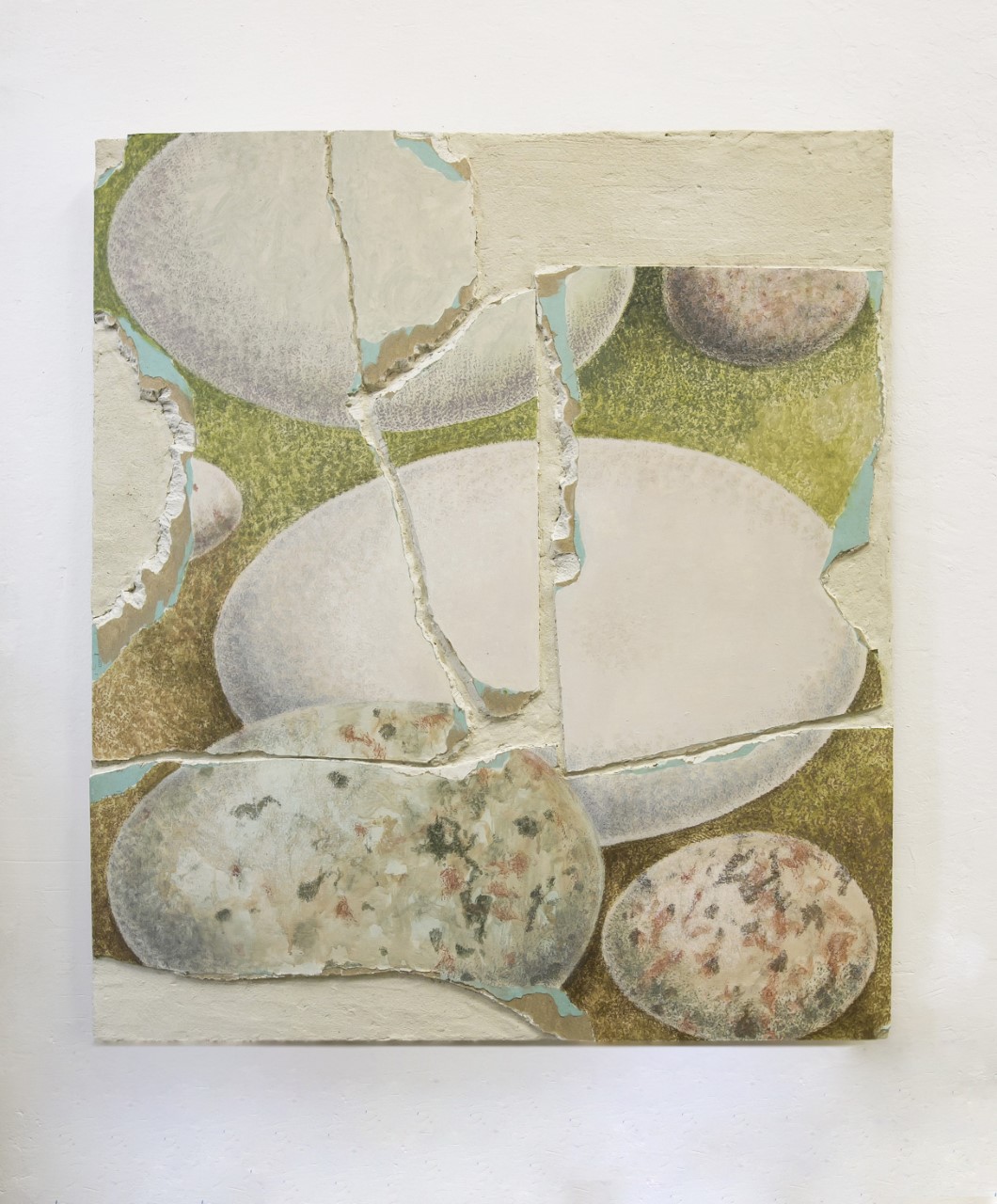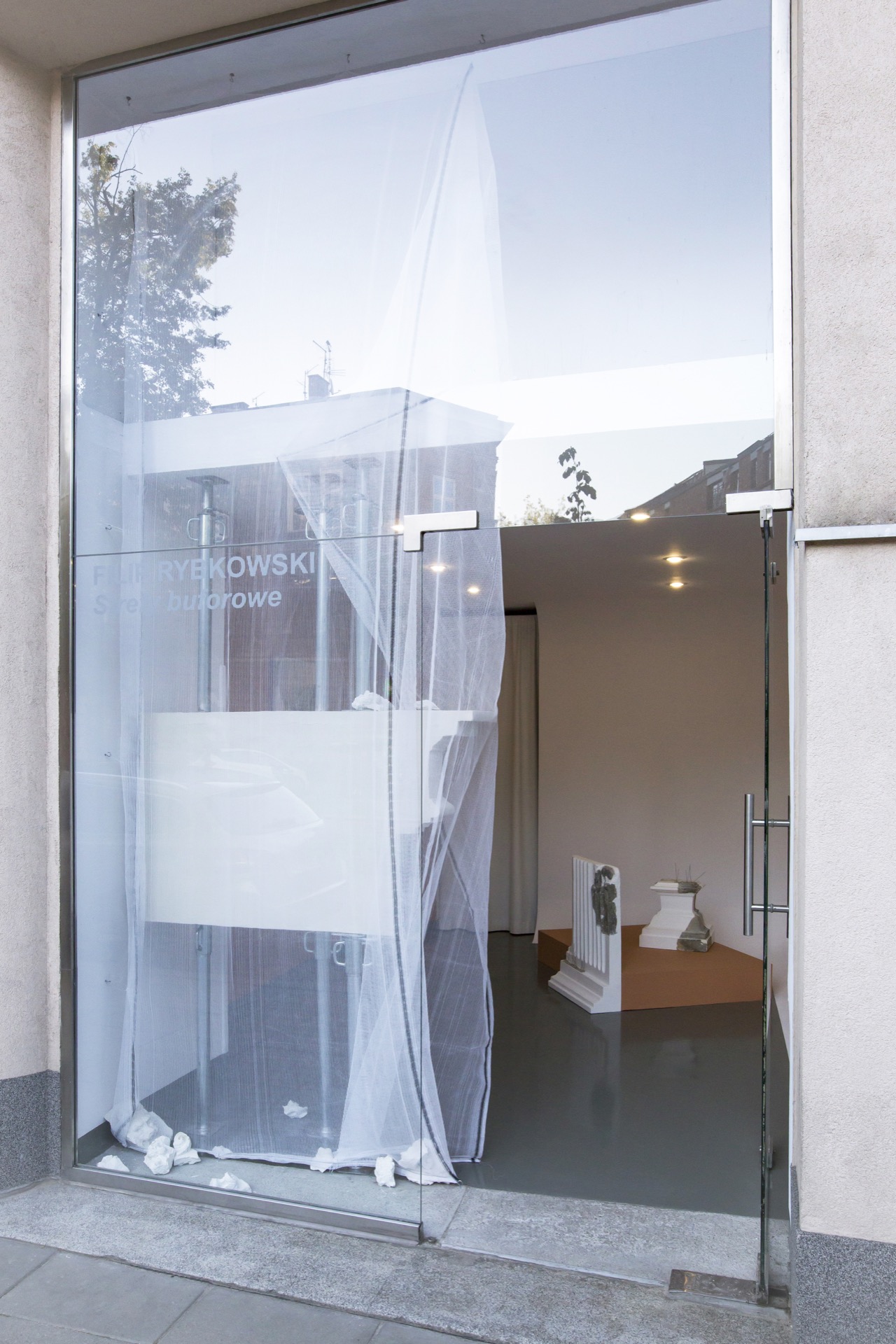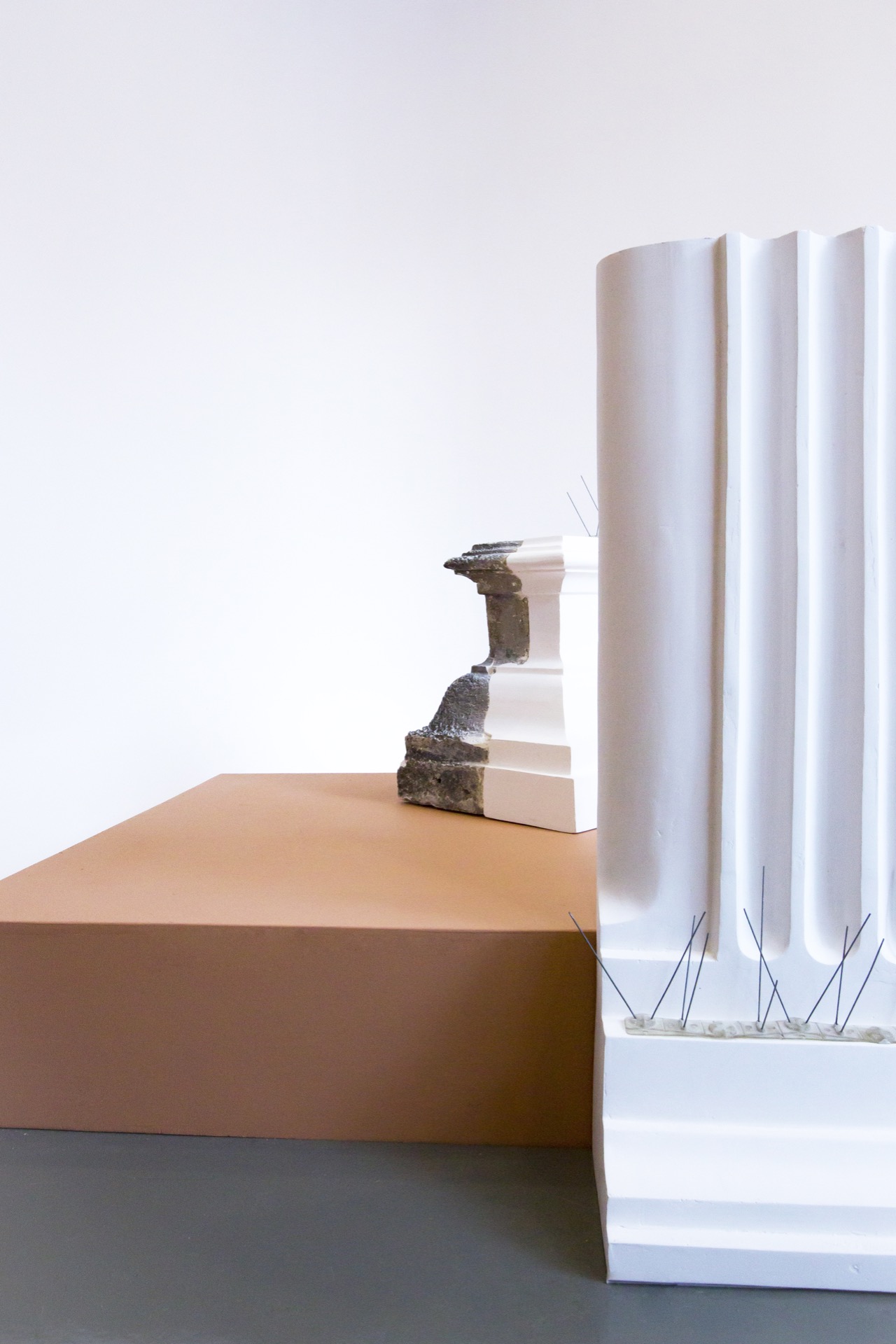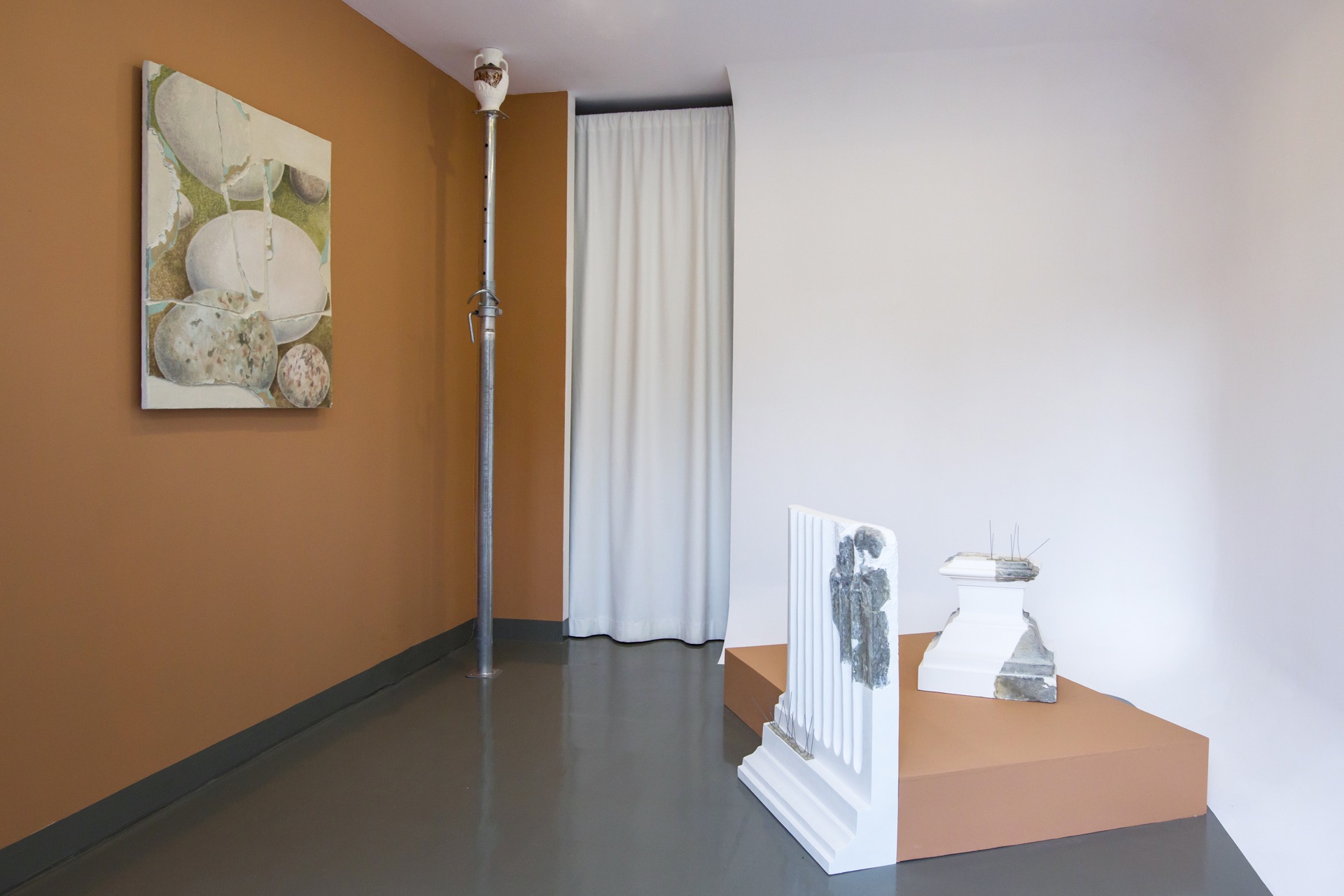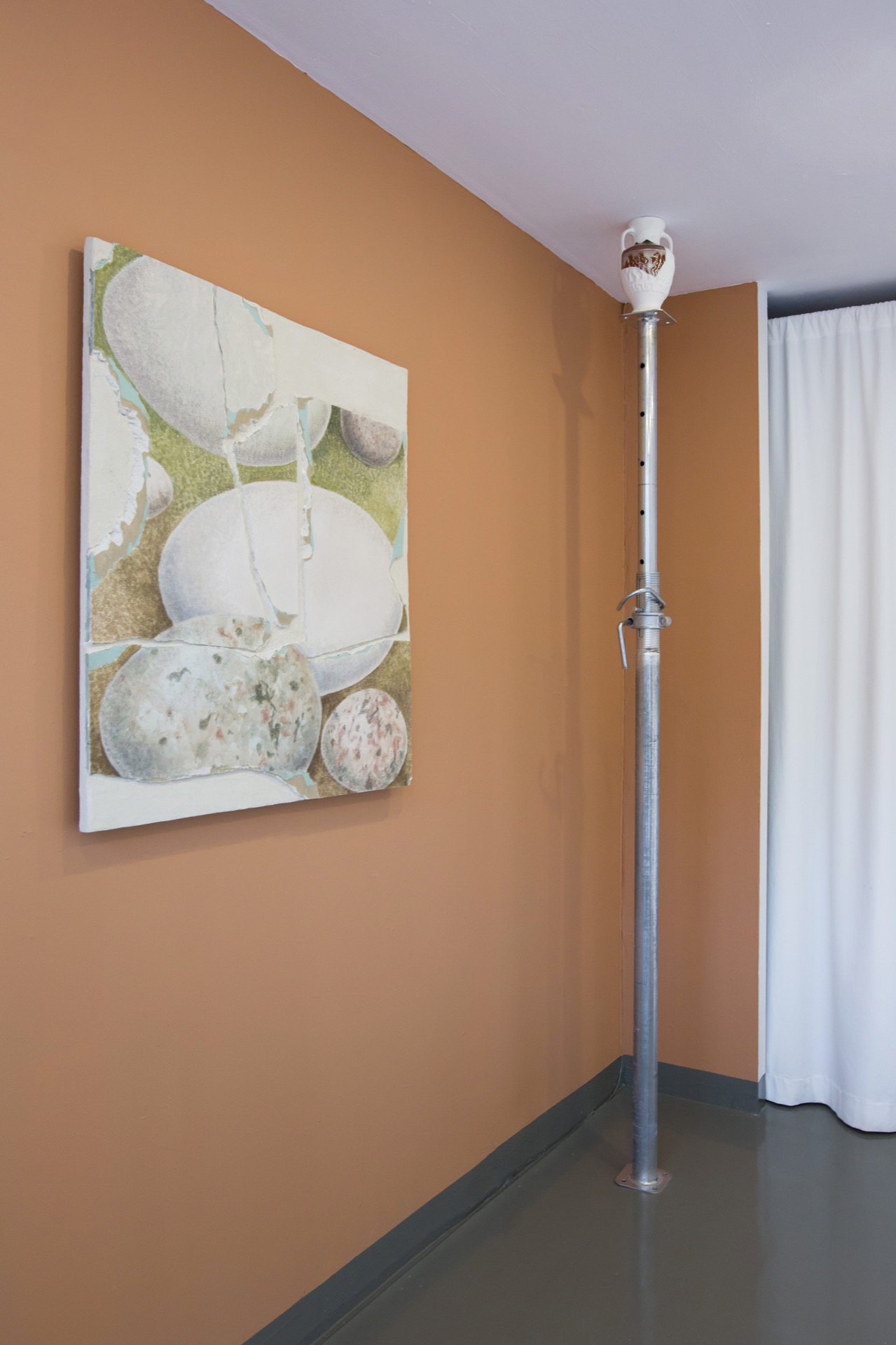Buffer zones
Cracow, 22.07 - 30.08. 2022
It sometimes occurs to us that all we experience are shredded and diminished parts of some former whole that was once simply completed in error. (Robert Musil)
How did it happen that the pigeon, an animal inherently aggressive and characterized by an extremely intense sexual drive, became a symbol of peace between nations? The ancients claimed that its body was devoid of bile, that fluid that provokes the human species to conflict. However, it was not until the titan of twentieth-century art, Pablo Picasso, himself combining the characteristics of a misanthrope and a sensitive child, that the modern iconography of the dove as a symbol of peace was to be created. He reportedly sketched the image of the bird carrying an olive branch in its beak on a napkin at a restaurant near the Monopol Hotel in Wroclaw during the 1948 World Congress of Intellectuals for Peace. We can only regret that this emblematic representation has not been preserved - as well as world peace between nations.
The construct of global peace has been created makeshift since the last great war. Patching it up, gluing it together, it crumbled, only to undergo another, again impermanent, maintenance attempt in a moment. Periods of stability allowed the illusion of peace to live on, despite the conflicts that crashed on European shores. Now everything is beginning to creak, joints are cracking, and the varnish is peeling and coming off in ever larger patches. Buffer zones are increasingly turning into war zones, and the white pigeons released on the occasion of peaceful celebrations have multiplied, forming an army that is only barely stopped by spike-infested ledges and windowsills.
Filip Rybkowski creates a patchwork of layered images of doves of peace taken from propaganda posters often produced by opposition parties to the conflict. The crumbs of representations collide, and the spaces between them are hastily filled in so as to create the illusion of cohesion. The artist erects a strange edifice in the gallery - recycled architecture cobbled together from elements whose history has completely faded, provoking only endless confabulations already. Its former splendor is guarded by the remnants of lion's heads, whose silent, fierce faces stare at the eternal catastrophe that constantly piles ruin upon ruin.
How did it happen that the pigeon, an animal inherently aggressive and characterized by an extremely intense sexual drive, became a symbol of peace between nations? The ancients claimed that its body was devoid of bile, that fluid that provokes the human species to conflict. However, it was not until the titan of twentieth-century art, Pablo Picasso, himself combining the characteristics of a misanthrope and a sensitive child, that the modern iconography of the dove as a symbol of peace was to be created. He reportedly sketched the image of the bird carrying an olive branch in its beak on a napkin at a restaurant near the Monopol Hotel in Wroclaw during the 1948 World Congress of Intellectuals for Peace. We can only regret that this emblematic representation has not been preserved - as well as world peace between nations.
The construct of global peace has been created makeshift since the last great war. Patching it up, gluing it together, it crumbled, only to undergo another, again impermanent, maintenance attempt in a moment. Periods of stability allowed the illusion of peace to live on, despite the conflicts that crashed on European shores. Now everything is beginning to creak, joints are cracking, and the varnish is peeling and coming off in ever larger patches. Buffer zones are increasingly turning into war zones, and the white pigeons released on the occasion of peaceful celebrations have multiplied, forming an army that is only barely stopped by spike-infested ledges and windowsills.
Filip Rybkowski creates a patchwork of layered images of doves of peace taken from propaganda posters often produced by opposition parties to the conflict. The crumbs of representations collide, and the spaces between them are hastily filled in so as to create the illusion of cohesion. The artist erects a strange edifice in the gallery - recycled architecture cobbled together from elements whose history has completely faded, provoking only endless confabulations already. Its former splendor is guarded by the remnants of lion's heads, whose silent, fierce faces stare at the eternal catastrophe that constantly piles ruin upon ruin.
